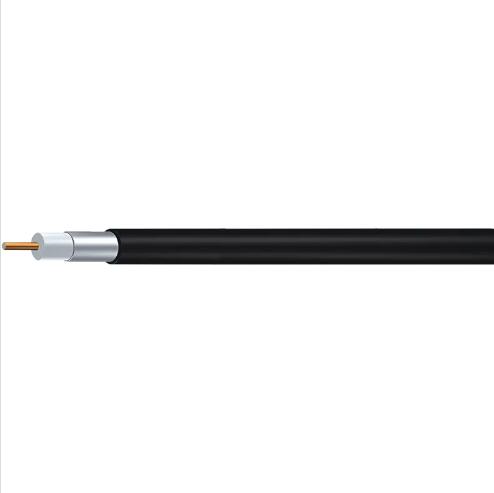Trunk coaxial cable is a type of cable that is commonly used to distribute cable television signals. It is made up of a central conductor, a dielectric insulator, a shield, and an outer jacket. In this article, we will discuss the basics of trunk coaxial cable, its advantages and disadvantages, and its common applications.
What is Trunk Coaxial Cable?
Trunk coaxial cable is a type of cable that is typically used for the distribution of cable television signals. It consists of a central conductor, usually made of copper or aluminum, which carries the electrical signal. This conductor is surrounded by a dielectric insulator, which helps to maintain the integrity of the signal.
Around the dielectric insulator is a shield, which is typically made of copper or aluminum foil or braid. The shield helps to protect the signal from external interference, such as electromagnetic interference (EMI). Finally, the cable is covered with an outer jacket, which provides additional protection from physical damage and moisture.
Advantages of Trunk Coaxial Cable
One of the main advantages of trunk coaxial cable is its ability to transmit signals over long distances. It can transmit signals up to 500 feet or more without significant signal loss, making it an ideal choice for cable television distribution.
Trunk coaxial cable is also relatively inexpensive and easy to install. It can be easily terminated with standard connectors, such as F connectors, and can be run through walls, ceilings, and other spaces without the need for special conduits.
Disadvantages of Trunk Coaxial Cable
One of the main disadvantages of trunk coaxial cable is its limited bandwidth. It is not as capable of carrying high-speed data signals as fiber optic cables or other high-bandwidth cables. This makes it less suitable for applications that require high-speed data transfer, such as streaming video or high-speed internet.
Another disadvantage of trunk coaxial cable is its susceptibility to EMI. If the cable is not properly shielded or grounded, it can be affected by external sources of EMI, which can degrade the quality of the signal.
Common Applications of Trunk Coaxial Cable
Trunk coaxial cable is commonly used in cable television distribution systems. It is used to distribute the cable television signal from the headend to the various distribution points throughout a building or neighborhood. It is also used in CCTV systems, where it is used to transmit video signals from surveillance cameras to a central monitoring station.
Conclusion
Trunk coaxial cable is a common and reliable choice for cable television distribution and other applications that require the transmission of electrical signals over long distances. While it has some limitations in terms of bandwidth and susceptibility to EMI, it remains an affordable and easy-to-install solution for many applications. If you are considering using trunk coaxial cable for your application, be sure to choose a high-quality cable that is properly shielded and grounded to ensure the best possible signal quality.
500 Series Trunk and Distribution Cable

CommSpace's 500 Series cable is seamless extruded tube. It is designed to eliminate pinhole leaks and micro cracking. It is optimized for use in broadband feeder plants. This cable is small size with low attenuation and inherent strength. Its proven performance and reliability make it the right choice for distribution applications.
500 Series Trunk and Distribution Cable

CommSpace's 500 Series cable is seamless extruded tube. It is designed to eliminate pinhole leaks and micro cracking. It is optimized for use in broadband feeder plants. This cable is small size with low attenuation and inherent strength. Its proven performance and reliability make it the right choice for distribution applications.
















